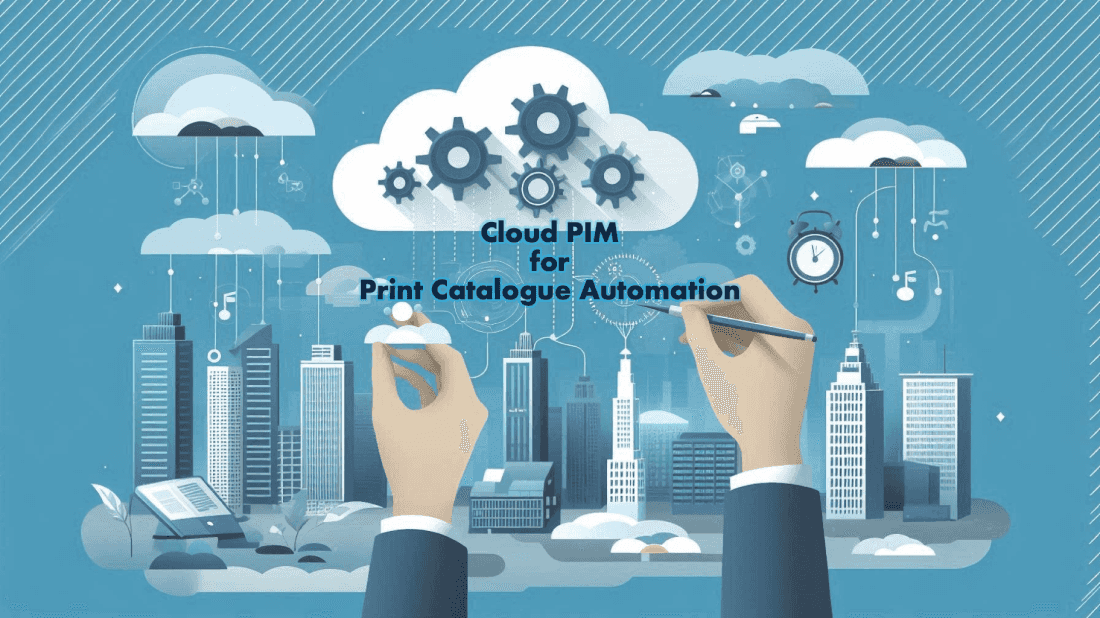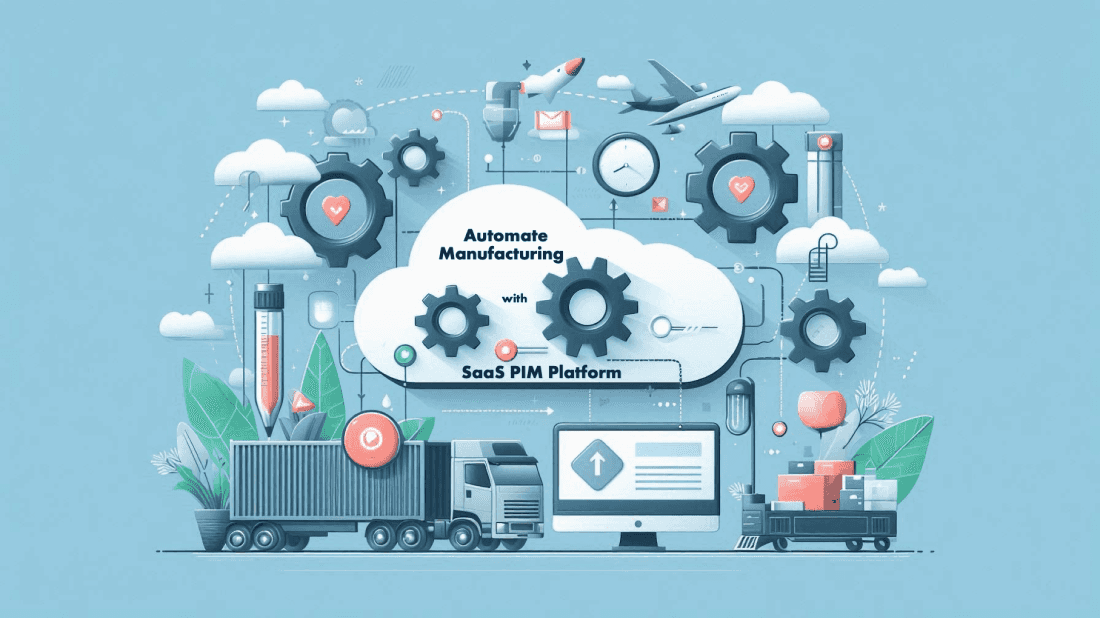Apr 22nd, 2024
Modern businesses have multitude of venues to exhibit, present, and sell their products to their target customers.
A single customer may look for information about the business and products on multiple channels. Also, different channels can publish the information in different formats.
Thus, multiple platforms also pose a challenge for management. How do you ensure that all the channels remain concurrent with product data? Channels can include websites, affiliates, e-commerce portals, and channel partners.
Product Information Management (PIM) Systems are the answer to this challenge for modern businesses.
What is a Product Information Management (PIM) System?
A PIM system is a software application designed to centralize, organize, and distribute product information across channels. It serves as a central database for all product data, enabling teams to manage, update, and share product information quickly.
Essentially, a PIM system collects, consolidates, enriches, and manages product information in one place. PIM ultimately helps in creating product catalogs and ensuring consistent, up-to-date product content across various selling channels.
Components of a PIM System
PIM system works with several different types of product information. These information modules are the components which build the PIM system:
- Master Data: This includes fundamental information such as product names, SKUs, IDs, and weights. It serves as the backbone of your product catalog.
- Marketing Data: PIM systems handle marketing-related details like descriptions, features, keywords, and metadata. These elements enhance product visibility and influence buying decisions.
- Technical Data: Specifications, dimensions, and technical details fall under this category. PIM ensures consistency and accuracy in presenting this information.
- Sales Information: Pricing, customer reviews, and other sales-related data are crucial for effective selling. PIM centralizes and manages this information.
- Channel-Specific Information: Different sales channels (e.g., eCommerce platforms, marketplaces) have unique requirements. PIM adapts product data for each channel.
- Digital Assets (Optional): Images, videos, and other media assets enrich product listings. Some PIM systems handle these assets as well.
- Taxonomies: Organizing products into categories, catalogs, labels, and tags ensures efficient navigation and searchability.
- Localized Information: For global businesses, PIM handles translations and country-specific data, tailoring product content to diverse audiences.
How Does PIM Systems Work?
PIM systems centralize and manage product information from various sources into a single repository. These sources can include suppliers, manufacturers, and internal systems. Here's how they typically function:
- Data Collection: PIM systems collect product information from structured and unstructured sources. These can include spreadsheets, databases, and external systems like ERP or CRM.
- Data Calibration: The collected data is standardized and cleansed to ensure consistency and accuracy across all product information.
- Data Enrichment: PIM systems allow users to enhance product data. Additional attributes, images, descriptions, and other relevant information provide a comprehensive view of each product.
- Taxonomy and Cataloging: Products are categorized and classified based on predefined taxonomies and hierarchies to facilitate easy navigation and search.
- Versioning and Governance: PIM systems maintain version control and enforce data governance policies. This ensures the publishing of accurate and approved information.
- Syndication and Distribution: PIM systems facilitate the distribution of enriched and approved data to various channels. For example, e-commerce platforms, marketplaces, print catalogs, and mobile apps, receive accurate and updated data.
- Integration: PIM systems integrate with other existing business systems. These can include e-commerce platforms, ERP, CRM, CMS, and DAM to synchronize product data across the organization.
- Analytics and Reporting: PIM systems provide insights into product performance, data quality, and customer interactions through analytics and reporting capabilities.
Benefits of Product Information Management
Modern businesses stand to benefit a lot from PIM system integration. PIM system’s master data management can simplify sharing information to your marketing and sales channels.
- Single Source of Truth
PIM software centralizes product data from disparate sources into a single database, providing a holistic view of all products. This centralized approach streamlines data management processes, eliminates silos, and improves collaboration across departments, leading to greater operational efficiency and productivity.
- Improved Trust
PIM systems enhance data quality by standardizing, cleansing, and enriching product information. Errors, redundancies, and conflicts are common with manual data entry and disparate storage. PIM ensures policy-based data governance for consistency, accuracy, and completeness of data. Data consistency across channels builds consumer confidence and trust in the brand.
- Enhanced Data Governance
PIM systems enforce data governance policies, ensuring that only authorized users can access, modify, and publish product information. They provide version control, audit trails, and workflows to manage data lifecycle, ensuring compliance with laws and industry standards.
- Effective Management of Digital Assets
PIM software enables businesses to efficiently manage digital assets such as images, videos, and documents associated with products. They provide a centralized database for storing, organizing, and distributing digital assets, improving asset reuse, consistency, and availability.
- Facilitates Cross-Channel Marketing
PIM systems support cross-channel marketing initiatives by providing a single source of truth for product information. They enable businesses to create consistent and relevant product messaging across various channels. The channels can include websites, social media, email campaigns, and offline channels, resulting in a seamless customer experience.
- Enhances Customer Experience
PIM systems enhance the customer experience with accurate, up-to-date, and rich product information across platforms. PIM supported CMS and e-commerce improves customer engagement with product selection and information while purchasing. The rich product information assists in product visibility on search engines and builds trust for the brand.
- Enables Omnichannel Commerce
PIM systems enable businesses to deliver a unified and consistent shopping experience across multiple channels. Channels can include online stores, mobile apps, marketplaces, and brick-and-mortar stores. They synchronize product data in real-time, allowing customers to browse, compare, and purchase products seamlessly across channels.
- Helps OEMs Maintain IP Ownership
OEMs and primary manufacturers focus on product and process innovations that improve the final product. In the traditional value chain, OEMs can lose the IPs for quality and feature improvements to other parties in the chain. PIM system will ensure that OEMs maintain ownership of these IPs and knowledge.
Challenges of PIM Implementation
Selecting an appropriate PIM solution is important for businesses as it should offer long-term consistency. Thus, businesses should consider the challenges of adopting a PIM system before deciding on one:
- Initial Setup and Configuration Complexity
Setting up and configuring a PIM system can be complex and time-consuming. It also requires expertise in data modeling, taxonomy design, and system integration. Organizations may face challenges in defining data structures, mapping attributes, and establishing workflows to meet their specific requirements.
- Data Migration Challenges
Migrating existing product data from legacy systems or spreadsheets to a PIM system can present a challenge. Old data requires cleaning, structuring, and transformation before adoption to PIM. Ensuring data integrity, consistency, and accuracy during the migration process is crucial to avoid issues with product information downstream.
- Training and Adoption
Training users and stakeholders on how to use the PIM system effectively is essential for successful adoption. Organizations may encounter resistance to change, especially among employees accustomed to manual processes or legacy systems. Providing comprehensive training programs and ongoing support is critical to overcome this challenge.
- Maintenance and Upkeep
Maintaining a PIM system requires ongoing efforts in data governance, quality control, and system optimization. Regular updates, patches, and upgrades may be necessary to address bugs, security exposures, and new feature releases. Organizations must allocate resources and budget for ongoing maintenance to ensure the continued effectiveness of the PIM system.
- Cost Considerations
Implementing and operating a PIM system can involve significant upfront and ongoing costs, including software licenses, hardware infrastructure, implementation services, training, and support. Organizations must carefully evaluate the total cost of ownership and ROI to justify the investment in a PIM solution.
- Integration with Existing Systems
Differences in data formats, protocols, and business logic make integrating a PIM system with existing enterprise systems challenging. Ensuring seamless data exchange and adaptability between systems requires careful planning, customization, and testing.
- Issues of Scaling
As the volume and complexity of product data grows, organizations may face issues scaling their PIM system. Performance bottlenecks, slow response times, and limitations in handling large datasets can impact user experience and productivity. You should look for PIM solutions that are scalable and support your business in the future.
Conclusion
A PIM system can enable omnichannel experience for your consumers. However, integration and data enrichment are two critical factors for your PIM investment to be profitable. Also, long-term scalability and cost factors in on the future benefits. SaaS based PIM systems like ProductHub are better equipped to provide the best of the three options.
API-based integration ensures that ProductHub captures maximum existing data. The system enforces data policies allowing only appropriate data for further use. ProductHub also supports integration of value-added services like analytics and language processing. So, you can adapt your catalogs and website information into other languages.







